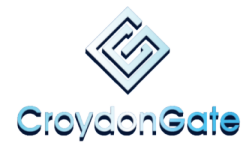Better Website Prospect Conversion with Email in Three Easy Steps
The sales cycle for different types of businesses varies a lot, and those with a cycle of weeks to months often use email follow-up marketing. The goal is to build a relationship with the prospect that leads to conversion and a sale. Huge sums of money and lots of time are spent in building website traffic and getting the visitors to take some action that identifies them for follow-up email marketing. When those emails result in “unsubscribe” clicks, all money and effort has been wasted.
The challenge, especially with pre-written email content, is to keep the prospect engaged while moving them on a path to making a purchase. Unfortunately, too often the follow-up emails are either too close together for the sales cycle or they are not adding value with new information the visitor wants to read. Here are some tips to keep the prospect engaged, avoid unsubscribes, and keep them moving toward the goal of a purchase.
#1 – Balance the email count with content and sales cycle length.
Some businesses, particularly service businesses and professionals, can have sales cycles of weeks to months. Sure, sometimes a business is lucky enough to catch a new prospect on the edge of a purchase, but they’re likely to respond right away, so these tips aren’t of use anyway. It’s those who start their research early and want more information before making a buying decision.
When it comes to professional services, such as attorneys, accountants, and consultants, the site visitor is also sizing up the professional based on what they find on the site and the quality of the information. This is also true of businesses with high ticket products or services. Think of it as the prospect looking through the front windows of a brick and mortar business to see what the inside looks like. If they’re attracted, they walk in for a closer look. Consider the website that front window and make sure that it is enticing and showing more value if they enter (in email’s case, they respond to a call-to-action).
Don’t send an email every other day when your average sales cycle is several weeks. Don’t wait too long either. It’s a balance, but worth the effort. In the next step is an email content discussion, and the filtered content, what’s important for a buying decision, should be an important part of crafting the emails and their frequency.
#2 – Don’t send puff pieces, only relevant info that supports a buying decision.
Based on the call-to-action that got their contact information or the information they requested, there should be an email campaign tailored to each main product line or service type or category. An example may be an accountant who has regular prospect questions about their ongoing bookkeeping services as well as their tax preparation and audit support services. Have an email campaign for each of those based on the original prospect request for information or other website call-to-action.
Try to choose the top two or three topics of interest in each email campaign product or service category. Create an email for each of these topics, and keep it focused on that topic. Have a strong title/subject line in the email that clearly tells the prospect what’s in it. Have a first sentence or paragraph that grabs their interest and promises more in the rest of the email.
There will be content on your website with more detail, and the email should provide text links to it for that detail, keeping the email more of an overview. Very long text emails turn off the reader. Just introduce them to the topic to get their interest and get them to stop looking through the window and come inside by clicking the link to details.
#3 – Have a strong call-to-action in every email.
Of course, there is always going to be a direct phone number for a call with questions. That’s a given. However, there should also be a call-to-action in case the prospect has reached a decision point. The goal isn’t to get them to stay in touch for the whole series of emails; the goal is to get them to buy. Every email should give them an easy way to buy or get one last bit of help in making the decision.
Back to the accountant as an example, one call-to-action could be a linked offer of a case study of a local small business owner’s tax savings from the accountant’s services. Or, it could be the offer of a customized analysis and quote for tax preparation services. The key is to give the prospect an easy way to make that buying decision in every email.
Following these three easy steps will cut unsubscribes and increase responses to follow-up email marketing campaigns. More sales will follow.






